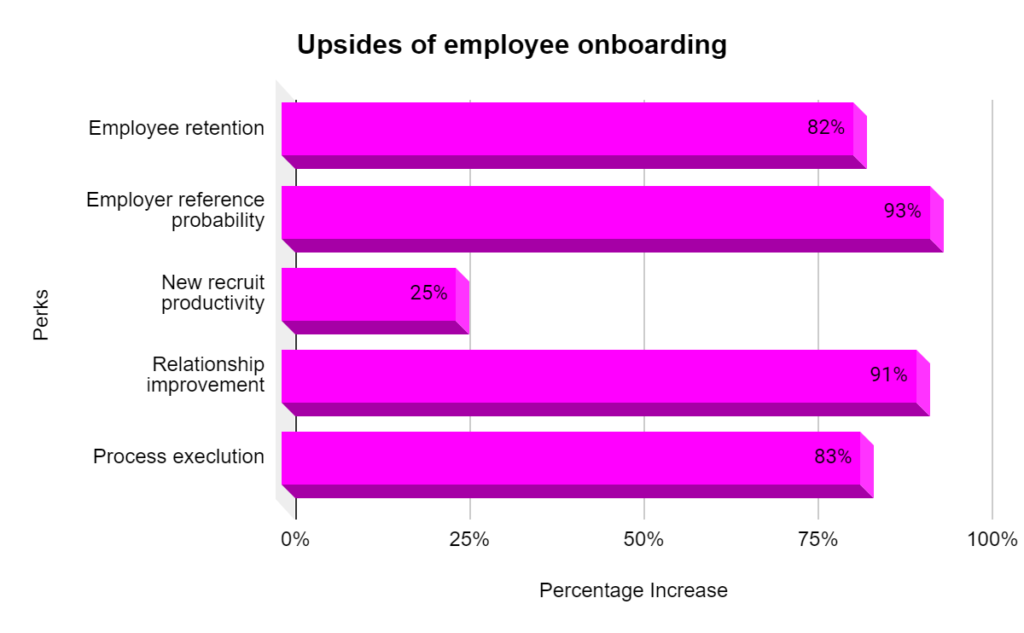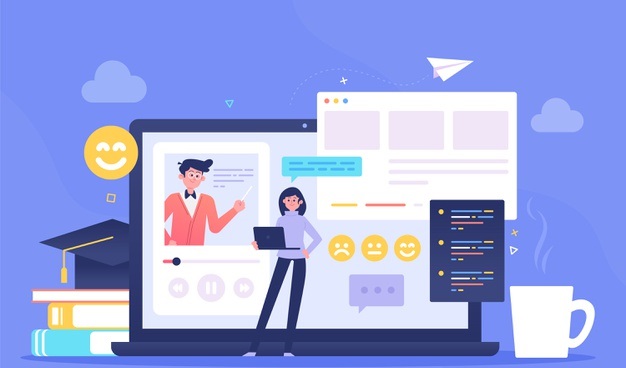Why is employee onboarding crucial? Well, “The digital economy is booming, making it tough for companies to find and compete for certain talent, so organizations are working overtime to court newly empowered candidates” — Gartner. Add to this the increased acquisition costs, and your problems multiply. It is imperative then for organizations to focus on minimizing employee regret after they have joined. The first step to get started is to have a high-impact employee onboarding process.
Employee onboarding is a critical element that determines the business impact of HR policies. High-impact employee onboarding does not merely comprise a lengthy company introduction presentation and a tour of the premises.
A well-designed onboarding program will increase employee retention and engagement. Additionally, it boosts loyalty, compliance, and competence. The end result? Increased productivity, revenue, and profit margin.

Research from Glassdoor states, “Organizations with a strong onboarding process improve new hire retention by 82% and productivity by over 70%.” The same report also suggests that effective onboarding programs leverage “Advanced learning tools to enable success on-demand rather than relying solely on classroom learning. These companies are 300% more satisfied than their lower-performing peers with the technology they’re using to support their onboarding programs, which correlates with significant gains achieved in time-to-proficiency and new hire retention”.

eLearning is a tried and tested method that helps augment your onboarding process. It is highly effective — during the induction of new employees and the transfer of existing employees to a different project/department. It ensures consistent content, end-to-end automated methodologies, and rich information delivery. Corporates can use mobile eLearning to welcome recruits before they join your organization.
Table of Contents
What Are the Benefits of eLearning in Employee Onboarding?
The benefits mentioned above are just a tiny slice of the many upsides of eLearning. Let’s explain why you should choose online training to digitize your employee onboarding process.
1. Optimized Use of Resources

Traditional classroom training comes with a significant flipside—high recurring costs. If your organization practices frequent employee onboarding, you incur expenses on paper-based learning materials, venue rentals, and instructor salaries. If your company spans multiple geographical locations, the cost increases manifold.
However, eLearning allows you to save dollars by breaking down the barriers of time and space. It is much more flexible than face-to-face sessions. Yes, you will spend an upfront amount to get the set-up ready. But you will do away with your recurrent expenses.
2. Delivery of Consistent Content
In traditional training, you might end up using different instructors in different locations. It can lead to a high percentage of inconsistency in training delivery. At times, boring lectures cause learners to lose interest.
eLearning, however, enables employees to access the same knowledge library from anywhere, anytime. Flexible schedules additionally allow them to complete the courses at their own pace – keeping them engaged. What’s more? The application of mobile eLearning modules is icing to the cake!
3. Customized eLearning Translates to Higher Employee Retention
Gartner had stated that “46% of new hires from the last 12 months said they wouldn’t make the same decision again.”
Yes, instant regret is one of the leading reasons for employees to consider jumping jobs. So how do you stop that? Try to create an informative, onboarding experience. Recruits should feel excited to join and then stay in your company for the long term.
Personalized training answers their questions and addresses individual concerns. Therefore, is far more effective than generic, traditional classroom lectures.
Customized eLearning modules lead to a high-impact employee onboarding program. If you embed social learning tools as well, the whole module becomes richer and more engaging. Creative eLearning can encompass the phases that extend to employee selection as well. For instance, where can a potential recruit go if s/he decides to check out your organization?
A well-rounded online learning course for your onboarding and induction initiatives offers an exciting training experience compared to dumping many documents or asking them to read the company website.
How to Do Onboarding for New Employees: Best Practices
Now that you understand the benefits let’s guide you through the best practices of deploying eLearning in your employee onboarding program.
1. Research

Understand the current onboarding process in your organization. You might need to replace an existing course with eLearning or convert the entire module into an online program.
Discuss with your hiring team how to set the expectations of employees. Talk to recent hires about what they want to gain from the training experience. Understand your target audience and then take the next step. To summarize, do your homework first!
2. Set the Basic Goals
The main focus of your eLearning program should be to make new employees feel welcome. The content should deliver an excellent first impression of your company. It must contain details of your organization’s brand image, culture, and values.
You should include what you expect from your employees. The training must be curated so that the recruits are enthusiastic about how their role can make a difference.
Ad: PlayAblo’s Corporate Learning solution is robust yet very lightweight and fun to use ensuring a high degree of engagement and course completion. Find out more and request a custom demo!
3. Only Teach What is Essential
You cannot overwhelm your new employees on their first day at work! Hence, design a training module that’s relevant to their role. Try to get information on their background and responsibilities in the job. What should they know to get started? Incorporate flexibility and autonomy for learners to access the course at their own pace.
4. Encourage Storytelling

Keep it real. Your eLearning modules should not be repetitive. They should not reiterate the same information that learners can read on the website. Embed stories or short video clips from colleagues who have been with the organization.
Furthermore, another good storytelling technique is to include a short clip with a warm welcome message from the CEO. Also, you can give an insight into how the company has evolved over the years by including a video from a senior professional.
Final Word
The best online employee onboarding experience is a combination of engaging content, which is NOT overwhelming. It must give your recruits information on how to perform. Moreover, it should infuse them with confidence that they have made the right decision. Of course, after completing the onboarding session, the employees should look forward to working with your company in the long run.
Ad: PlayAblo’s Enterprise-Grade Micro-Learning platform is built for millennial learners. Micro-Learning, assessments, and gamification features ensure learning outcome measurement and sustained engagement.
Find out more and request a custom demo!







4 Comments
Comments are closed, but trackbacks and pingbacks are open.